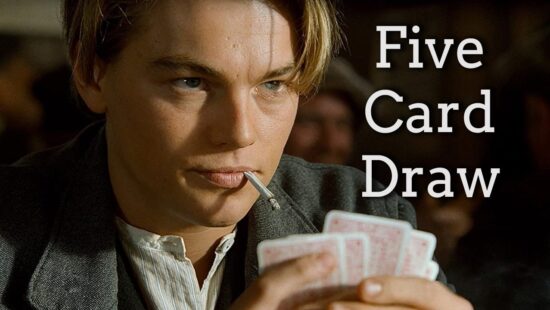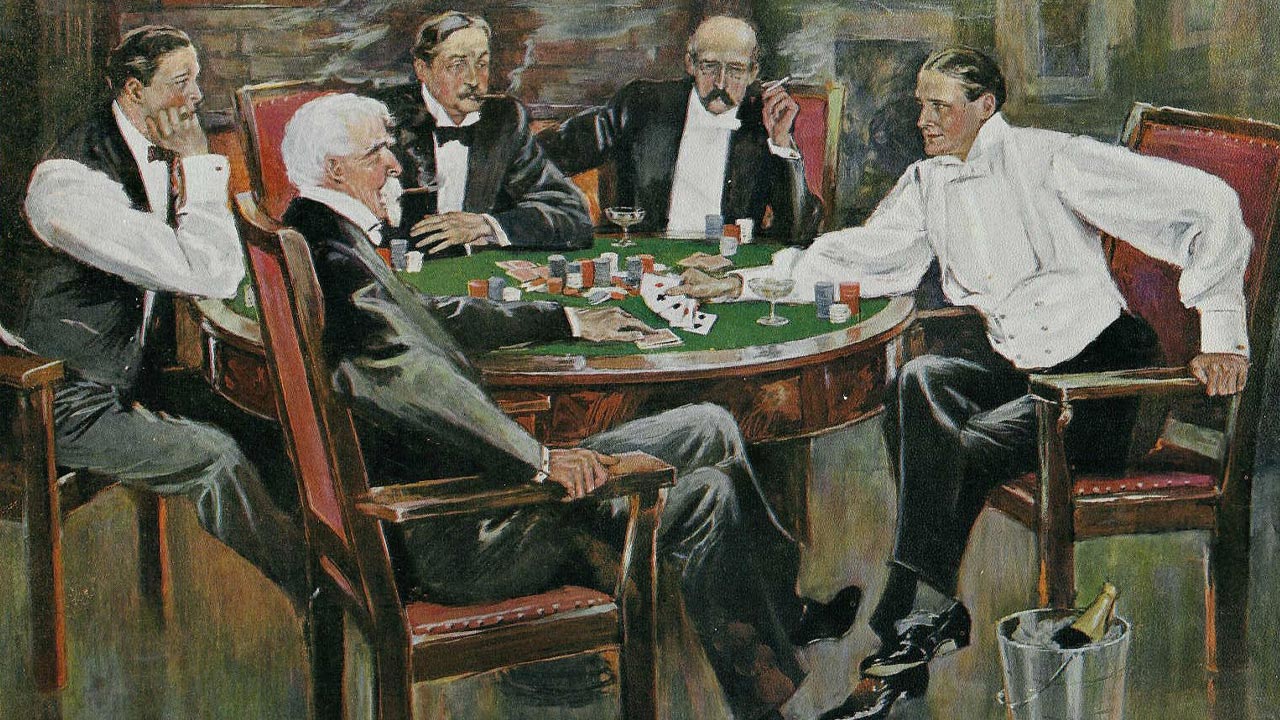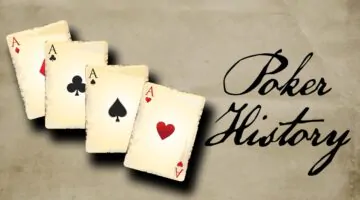5 Card Draw Poker – Jack’s Ticket to the Titanic
- By: Sean van der Merwe on November 19, 2021
- Categories: Gaming

While it’s a romanticized work of fiction based on a true event, the movie, Titanic, will live on in the memories of most who have seen it.
Poker and Titanic Voyage
The story unfolds as a poor but street-smart ‘Jack Dawson’ (played by Leonardo DiCaprio) manages to win a voyage for himself and a friend on the RMS Titanic during a game of five-card draw poker.
His “full house” was the decider against his opponent’s “two-pair”. Was he all that lucky though? Yes, he met the love of his life on the journey, but he also met the end of his existence, as the great vessel plunged into the icy North Atlantic that fateful morning of the 15th of April 1912.
While a game of 5-card poker was the catalyst for an epic tale of love and drama in that film, it’s been an inspiration to Hollywood on more than one occasion. Whether the catalyst in a Western saloon brawl or the precursor to problems with the mob, this classic game of 5-card draw poker must surely go down in history as a cultural icon.
As such, we’d like to pay homage to this rendition of the poker game in an article devoted to its rich history.
What is Five-Card Draw?
Most versions of poker revolve around a five-card hand. It is the aim of the game to land a poker ranking (specific poker combination) that is higher than your opponent’s one. These play out in various ways, depending on the game variant. Five-Card Draw is a closed-handed game, which adds to the suspense of the round. The art of bluffing needs to be at its best to influence players into folding in this game.
Bluffing is usually far easier with open-handed poker, like Texas Holdem. Here, the players at the table can see all the possible power hands that may be possible. You need to try and convince your opponents that you have the right hand to join up with the table cards, even if you don’t.
Here is a brief rundown of draw poker, according to the Britannica Encyclopaedia:
“In straight poker, each player is dealt five cards facedown, and the deal is followed by one betting interval, beginning with the player nearest the dealer’s left, and then by a showdown. After the 1850s, straight poker was eclipsed by draw poker, which allows each active player, in turn beginning at dealer’s left, to discard one or more of his original cards and receive replacements for them from the undealt portion of the pack. (A player who declines to draw cards is said to “stand pat.”) After this process, called the draw, there is a second betting interval, followed by the showdown. Sometimes a minimum hand, such as a pair of jacks, is required in order to make the first bet before the draw.”

Antique Vintage Poker Card Game – Print by Clarence Underwood
The History of Five-Card Draw Poker
The history of poker can be traced back ten centuries, however, Five Card Draw makes its appearance in the middle of the 19th Century. This was shortly after the full 52-card deck came about in the 1820s. It is clear from the history books that this was the most pivotal time for the game in poker’s evolution. The element of drawing cards had a massive influence on the popularity of the game. It was only after the establishment of these rules that the flush and then the straight ranking came into the game.
The 1800s ushered in the era that we know as the Wild West. however, taverns and saloons were not the only places that people would enjoy this game. It wasn’t long before the Mississippi steamers became renowned for their poker tournaments. Citizens would travel north and south up and down the country, partaking in table cards games along the way. This brings to mind the famous action-packed gambling-themed movie, Maverick, starring Mel Gibson. Though fictional, this 1994 film paints a detailed picture of poker culture in this era.
The casinos in New Orleans also provided a thriving centre for 5-card draw fandom, establishing itself as the fulcrum for the game in the USA.
The influence of five-card draw was massive on Americana. So much so, in fact, that both the Confederate and Union soldiers in the American Civil war played it to pass the time by. To this day, poker nights with the “boys” is an iconic get-together among American men. Of course, with the influence of the US on Western Society, many of us in the rest of the world grew up learning the game, too.

Dealing the “Flop” – Texas Hold’em
From a Closed Hand to the Table
Five-Card Draw’s notoriety faded a little in the 20th Century with the introduction of both 5-Card Stud and 7-card Stud. The fascination with playing partially open-handed poker began to entice the crowds into poker rooms around the world. The bluff culture began to broaden, as the visible card would keep players guessing and presented the perfect platform for skilled card sharks to take advantage of.
It is this trend that essentially paved the way for Texas Holdem to make its explosive entry onto the scene. Here, the game mechanics include a closed hand combined with communal cards.
Despite these adventurous and exciting additions to the poker universe, we need to remember our roots. Had Five-Card Draw never arrived on the scene, there is a good chance that poker’s evolution may look very different – if the game had survived at all.



